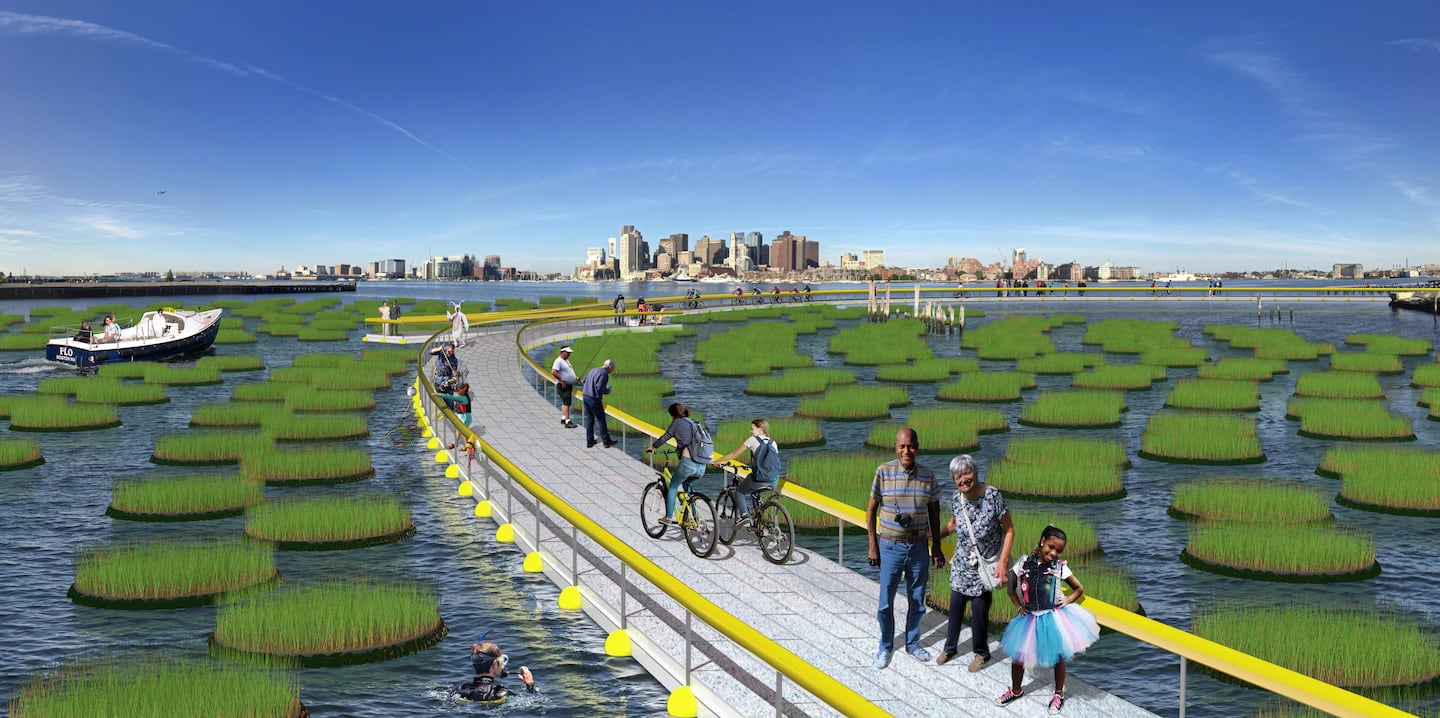BOSTON — Boston Harbor is one of the region’s greatest assets, but it could become its biggest liability.
Sea level rise associated with climate change is expected to wreak havoc all along the coastline.
Boston has already seen a taste of the future as rising seas flood busy streets and landmarks on a regular basis.
Just last week, the National Oceanic and Atmospheric Administration issued a report indicating Boston would see up to 18 days of high tide flooding next year and predicted that trend would continue to grow in the future.
“What’s happening is Boston used to be marshland. A lot of it is filled,” explained Julia Hopkins, and assistant professor of civil and environmental engineering at Northeastern University.
Marshes act like nature’s sponge, absorbing rising tides and softening the blow of powerful waves.
Replacing those areas with the hard built-up surfaces you find in an urban setting has the opposite effect.
That gave Hopkins and a team of scientists at Northeastern University an idea: to re-create the effect that has a marsh has.
They call it the Emerald Tutu.
“It’s a coastal resilience tool,” Hopkins said. “It’s called a nature-based solution which means that it is engineered infrastructure that uses a lot of natural elements to protect the shoreline from flooding, specifically from storms.”
Scientists are now testing prototypes. They’re seven-foot discs that have plants on the top and seaweed on the bottom.
The discs are linked to one another and placed just off the threatened coastal areas.
“They’re meant to sort of surround Boston like a tutu,” Hopkins added.
As incoming waves hit the tutu, their force is absorbed and diminished.
Hopkins says a big advantage of this approach is flexibility.
“The tutu is modular, which means over time as conditions change, as climate change intensifies . . .you can change the tutu to match whatever the weather conditions are that you’re experiencing.”
The threat is real.
Boston Harbor has already seen sea levels rise by 9 inches since 1950. Even with reduced carbon levels in the atmosphere, it could rise another foot in the next few decades.
The tutu earned a research grant from that National Science Foundation and has won design awards from M.I.T and the American Society of Civil Engineers.
It’s also inspiring young scientists who want to be part of a solution to climate change.
Louiza Wise, an ecological engineer, said, “It’s exciting to not only just have this looming dread of what’s to come but to be working on something that’s going to be a potential solution.”
Hopkins hopes this first of its kind approach can be replicated in lots of coastal cities.
“We’re meant for an urban coastal environment and that certainly means all of Boston. I’m a New Yorker . . . and hopefully that means a lot of New York City too.”
The name Emerald Tutu is a play on the Emerald Necklace which is the chain of parks that goes from the Esplanade, down thru the Arboretum, and ends in Franklin Park.
The developers hope the Emerald Tutu will become another iconic landmark showing how Boston develops an outdoor resource.
Download the FREE Boston 25 News app for breaking news alerts.
Follow Boston 25 News on Facebook and Twitter. | Watch Boston 25 News NOW
©2022 Cox Media Group








